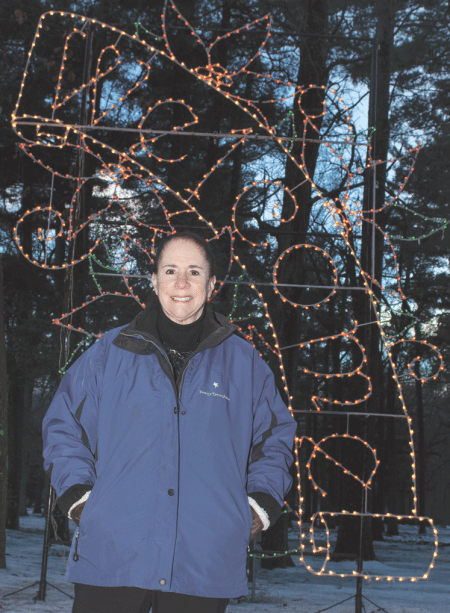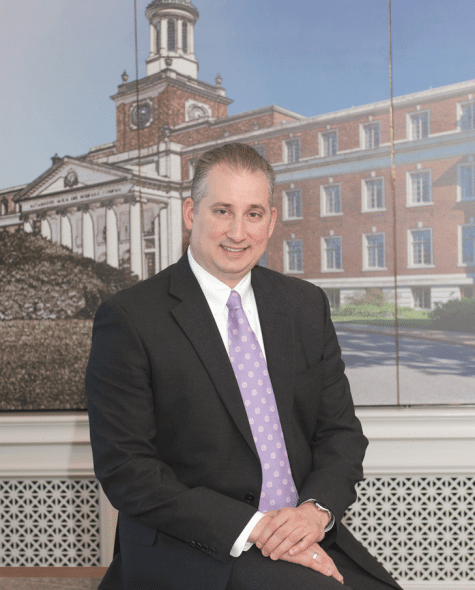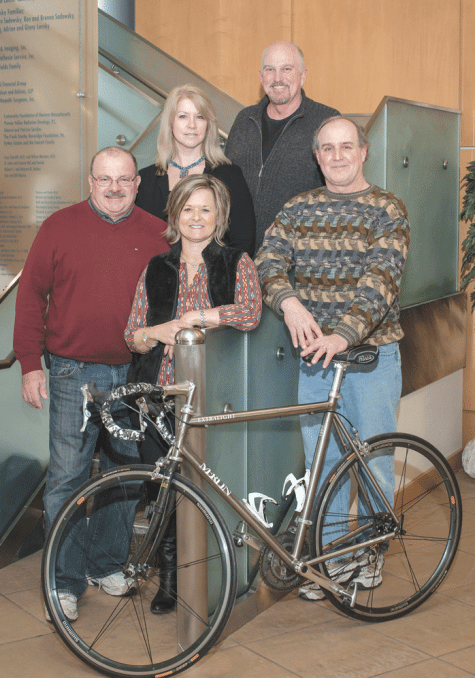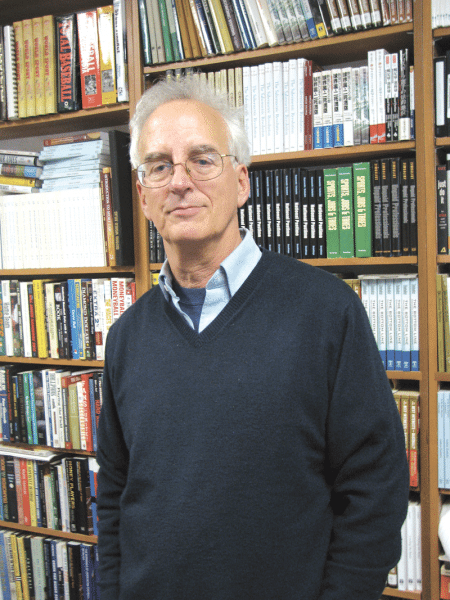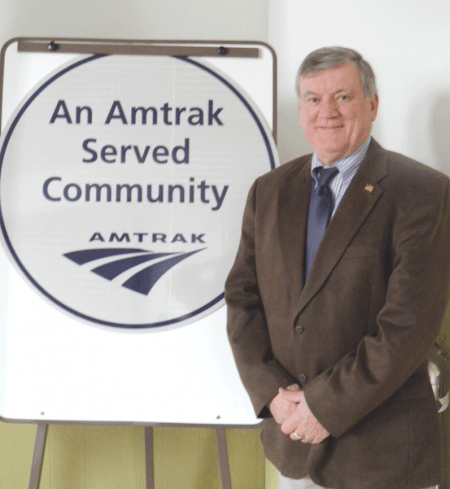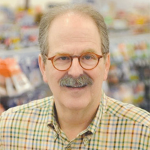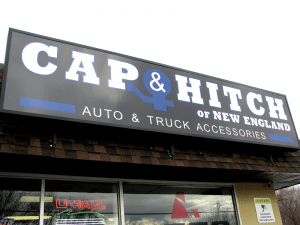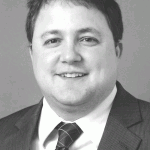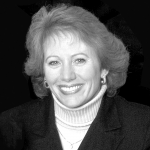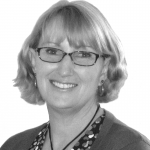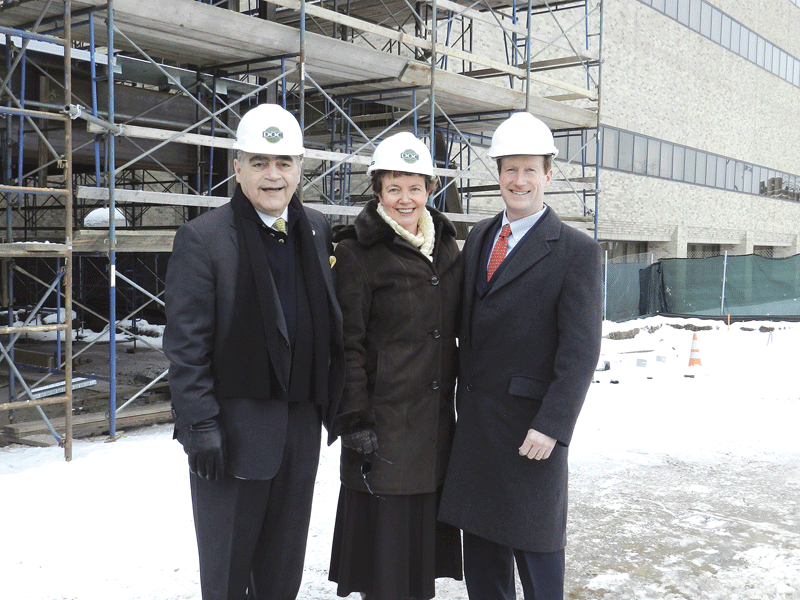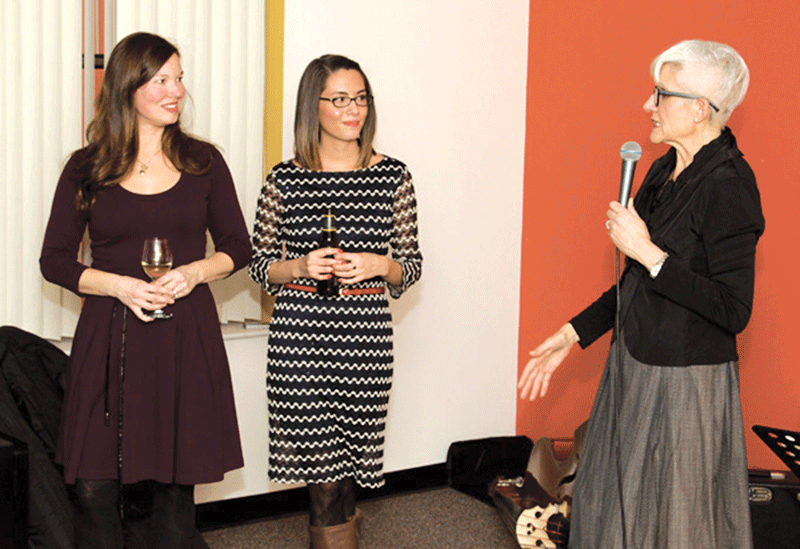Rescue of a Springfield Landmark Gave the City a Needed Shot in the Arm
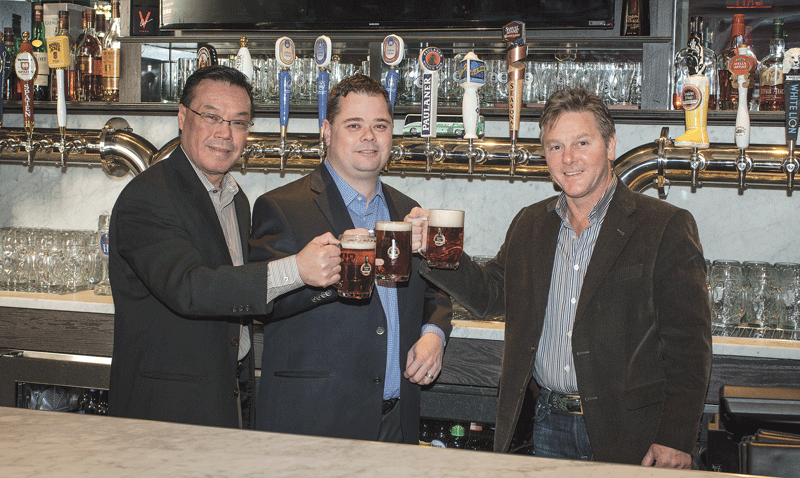
From left, Andy Yee, Mike Vann, and Peter Picknelly, members of the new ownership team at the Student Prince and the Fort.
Photo by Denise Smith Photography
Steve Roberts was recounting some of the hundreds of memories he’s stashed away from nearly a half-century of frequenting Springfield’s iconic Student Prince restaurant, a.k.a. the Fort.
He talked about his favorite items on the menu, some of the traditions, like Game Fest, some of the many special occasions that have taken place there, the countless times he took clients there for lunch and dinner, and … swiping beer glasses.
“As a kid, stealing shells (smaller glasses), mugs, and steins from the Fort was a sport,” he said of the pilferage, adding quickly that he was more than a little embarrassed to admit his actions, which occurred more than four decades ago. But feelings of guilt or remorse have mostly been replaced by a sense of pride from having made good with the Fort’s owner at that time, Rupprecht (Rupert) Scherff.
“I can remember one day when I came in … I was married, I was back in town, I’d been living in my house for a few years, and I said to Rupert, ‘can I buy 24 shells and six steins?’” said Roberts, now the CEO of the third-generation business F.L. Roberts. “And he looked at me and said, ‘you haven’t stolen enough of them?’
“I said to him, ‘Rupert, I’m embarrassed; you tell me how many of those you think I’ve stolen of each,’” he went on. “He gave a number, and I told him to pack up a case of each, subtract from the cases what he thought I’d stolen, add a few more to that total, and bill me for whole cases. And Rupert and I were friends from that moment on.”
These days, Roberts is adding more memories to his huge portfolio, and because he can, Peter Picknelly and Andy Yee, who partnered with Kevin and Michael Vann to create and execute a survival plan for the Student Prince and the Fort, have been chosen by BusinessWest as Difference Makers for 2015.
Some might ask why such an honor would be bestowed on a few businesspeople who stepped in and purchased the landmark when the next generation of the Scherff family declared they could no longer make a go of it. But those who have frequented the establishment and understand its place in the city’s history — and its psyche — see no need to ask.
They know why. Because they, like Roberts, don’t have to stop collecting memories on Fort Street.
By now, most know the gist of this story — how Rudi Scherff, Rupert’s son and co-owner, announced early last summer that the landmark was struggling and would likely close if new ownership could not be secured. And how Roberts convinced the Vanns, who have consulted for a number of restaurant owners, to survey the landscape at the Fort. And how the Vanns saw a business with challenges, but ones that could be overcome. And how they helped facilitate talks and eventually a partnership between Peter Pan Bus Lines CEO Peter Picknelly, who not long after Scherff’s announcement made clear his intent to save the icon, and Yee, whose family owns the Hu Ke Lau in Chicopee and other eateries.

Andy Yee, right, with then Gov.-elect Charlie Baker at the well-attended grand reopening of the Student Prince and Fort on Dec. 3.
Photo by Robert Charles Photography
It’s not hyperbole to say that the city itself was lifted by the turn of events.
“For them to step forward was really a huge shot in the arm for the entire city,” said its mayor, Domenic Sarno. “It sent a ripple effect of anticipation and helped spread a can-do attitude here in Springfield. You can’t put a price tag on the morale boost this has given the city.”
The significance of the reopening hit home for Picknelly, and in a poignant way, on Dec. 18 as the Student Prince — and the Picknelly family — continued a long-standing tradition of caroling at the restaurant.
“That would have been my mother-in-law’s 82nd birthday — she passed away more than 10 years ago,” he recalled as he set the stage. “We go every year as a family with my in-laws, and we honor her; that’s the only thing she ever wanted to do for her birthday — have the whole family go out and hear the carolers.
“I was looking around that night … the place is humming, it’s packed, people are smiling, they’re having a great time, families are together,” he went on. “And I’m saying to myself — and I later said to Andy — ‘imagine this not happening in our city.’”
Because of the new ownership team’s decisive action, no one has to engage in that exercise.
It’s Their Bread and Butter
As he talked about his decision to help resuscitate the Student Prince, and all that has happened since, Picknelly stressed repeatedly that he entered this journey knowing little, if anything, about the restaurant business.

Peter Picknelly says he’s proud to be able to continue such long-standing Student Prince traditions such as caroling during the holidays.
Photo by Denise Smith Photography
And he’s also learning about just how loyal customers are to the landmark’s many traditions — large and small.
Like the slices of bread that were, for decades, served before lunch or dinner, almost always with pats of butter that were rock hard and therefore impossible to spread. As part of a strategy to implement change where they thought it was needed, Picknelly and Yee eventually replaced the bread with fresh rye rolls brought in daily from a bakery in Boston.
But not for long, as things turned out.
“This just blows my mind,” said Picknelly. “I thought these rolls were awesome — every morning delivered from Boston. But the number-one complaint we received from people … they wanted that old sliced bread back. So we stopped the rolls, and we’ve got the sliced bread. I don’t get it, it blows my mind, but that’s what they want.”
Actually, the partners were able to improve on that tradition, said Yee, by serving it with “whipped, room-temperature butter that’s easily spreadable.”
In a way, that’s what they are doing with many facets of the restaurant — from the décor to the layout of the bar to the menu items. The new owners are making improvements without changing the character of this 80-year-old institution or the tangibles and intangibles that “make the Fort the Fort,” as Yee said.
And many improvements were needed, said Mike Vann, who recalled for BusinessWest the prognosis that he and his father, Kevin, arrived at for the Student Prince after a thorough look at the operation last summer.
“We concluded that the patient needed to be fixed,” he said, adding that its condition was far from critical, but it was worsening. “The revenue, generally speaking, was still very strong, so it was a matter of cost containment and cost management. They were still doing pretty good numbers, but the food costs were high, and the labor costs were high, and when you walked through the building, you could see that it needed some love and attention — it hadn’t had that in a while. From a financial standpoint, these were fixable things.”
The importance of finding someone to provide that love and attention hit home to the Vann family and many others, said Mike, because the city had already seen two of its iconic restaurants — Lido’s (or the Lido, as it was known to many) and Sylvano’s, Italian restaurants located only a few blocks from each other on Worthington Street in the city’s downtown — close their doors.
Both were, like the Student Prince, family-owned Springfield institutions that provided memories for several generations of many families.
“When Lido’s closed, that was huge news,” said Vann. “Our family was there for four generations. For us, having the Lido close was devastating, because that’s where we would go for our family meals. And one of the biggest lessons I’ve learned about the Fort so far is how many families have traditions that revolve around it.
“The Fort was the last iconic restaurant in Springfield,” he went on, adding that, for him, his father, and really all those who were and still are involved in the endeavor to keep it from becoming another statistic, it has been a rewarding experience on many levels.
Salad Days
The story of how Picknelly, the Yee family, and the Vanns came together as the new ownership team has already been told through a number of media outlets and is fast becoming part of Springfield lore.
To recap, Roberts, concerned about the fate of the restaurant he’d been coming to since the ’60s, learned of the seriousness of the situation from Rudi Scherff. He then asked the Vanns, as veteran consultants to restaurateurs, to look at the books, draw up a road map for the future, and explore options for a new ownership team. Meanwhile, Picknelly, who had been coming to the Fort for as long as he could remember with parents, grandparents, and his own children, had let it be known that he would step forward and be part of the effort to revitalize the institution.
But he knew he needed a partner, because, as noted earlier, he knew very little about this business.
Andy Yee, on the other hand, grew up in the industry, learning the ropes from his father, Johnny, who started the Hu Ke Lau in 1965 and eventually opened a number of restaurants around the country. The two came together as a result of what has already become a famous phone call.
“He called up and said, ‘Andy, this is Peter Picknelly … I got your cell phone number from a mutual friend of ours, [state Rep.] Joe Wagner,’” said Yee, noting that he prepared himself for a long conversation. “Within 15 minutes, we knew we had a deal. We didn’t actually have one, but knew there would be one.”
It would take several weeks to hammer out all the details — Picknelly would take a 50% stake in the operation, the Yee family 40%, and the Vanns 10% — but long before the ink on any paperwork was dry, there was anticipation, enthusiasm, and, as Sarno mentioned, a can-do attitude.
It would be needed, because the new owners set an aggressive target date for reopening — the day before Thanksgiving — and were already scaling up plans to give the landmark a new, more modern look, a slightly revamped menu, and a new lease on life.

The festive scene at the restaurant’s grand reopening ceremonies on Dec. 3.
Photo by Robert Charles Photography
“I don’t think they were going to spend the kind of dollars they did to bring it back, but the response from people all over the place once they announced this team-up really excited them, and they just pushed it,” he told BusinessWest. “They said, ‘let’s do it now,’ rather than just clean it up, brush it up, and get back in the ring. They said, ‘let’s do this thing right.’
“My biggest concern was about whether they understood the charm, the character, the personality, and the traditions that have been a part of this restaurant for years,” O’Brien went on as he recalled his thoughts as the new owners went about their work. “I knew Peter did, but I wasn’t sure about Andy. I was wondering, ‘where would he take it?’ What really impressed me quickly was the fact that he had this really talented Boston designer who really understood German restaurants and really understood all of the Fort’s personality and character — and enhanced it.”
O’Brien went so far as to draw an intriguing analogy between the Fort and the iconic, 103-year-old home of the Red Sox, which has been renovated and in some ways modernized in recent years, but in ways that haven’t compromised its character.
“I said to those guys in the beginning, ‘you’re like the caretakers of Fenway Park,’” said O’Brien. “[Red Sox owner] John Henry and company understood the character of the place, and they really brought it up to date, but they didn’t jeopardize the place. I think that’s what they’ve done with the Fort — they did a really interesting job with the place.”
Icing on the Cake
The renovated and revitalized Fort has been open only a few months, but all those we spoke with said the new ownership team is off to a fast and solid start.
O’Brien praised its ability to listen to commentary and criticism — and there’s been a lot of both — and respond accordingly and appropriately, as evidenced by the return of not only the sliced bread, but the Fort’s signature ‘boot’ glasses, in a street-legal size.
Roberts, who has frequented the restaurant eight or 10 times since it reopened, by his count, gave it good reviews while noting that there are still some bumps to smoothen out and changes to make — like bringing back lunch specials. Overall, he’s confident that the new owners will make their business venture successful.
Vann, for his part, believes considerable progress has already been made.
“The response thus far has been great — people are in there, they’re coming back, and they’re talking about it,” he said. “It’s definitely relevant; it’s a place that people want to be seen at and want to eat at. From that standpoint, it’s mission accomplished.”
Perhaps, but Picknelly and Yee would probably prefer ‘mission in progress.’
Indeed, they say they’re mulling more changes and additions that fall into that category of improvements that don’t alter the landmark’s overall character.
Plans are being drafted for more and different kinds of entertainment, pig roasts on Fort Street during the warmer months, additional choices during Game Fest, and much more.
And then, there’s the menu, which remains a work in progress, said Yee, adding that the Fort reopened with what he called menu release 1.0, and he’s already working on version 1.2.
“We have a lot of eyes on us on this one, and we continue to work through the steps and measures to get the menu where we want it to be and get everything just right; we’re still fine-tuning,” he said. “The menu is not an exact science; it’s really what the people want, and the Fort is such an institution that people are programmed to enjoy their favorites for a long, long time.
“Like the veal shank,” he went on, referring to a long-time favorite of many. “I’m pulling my hair out trying to source out a veal shank to make it affordable because it’s such a high-price item.”
Picknelly said one overarching goal is to make the Fort, which has traditionally been what he called a ‘holiday restaurant,’ into more of a 12-month venue.
“What we’re trying to do is make the Fort a destination — and not just for Christmas,” he explained. “We’re looking to make this an event place; we want to make the restaurant a Springfield institution year-round.”
While the Fort is off to a good start, all those involved know that a host of challenges await and success is certainly not guaranteed. But already, the new owners are feeling a sense of accomplishment from keeping the landmark open and allowing new memories to be created.
To emphasize that point, Picknelly returned to Dec. 18 and the carolers.
“There are thousands of families that would have lost this tradition if the Fort had closed,” he said. “And no matter what we do going forward, that night made it all worthwhile — for me, anyhow.
“They were singing ‘Silent Night,’ first in German and then in English, and they turned the lights down,” he went on, recalling the most poignant moment from that evening. “They turned the lights back on, and there were people crying in the restaurant. I already knew that this was a good thing to do for the city, but at that moment, I realized just how important it was.”
And so did everyone else.
George O’Brien can be reached at [email protected]



